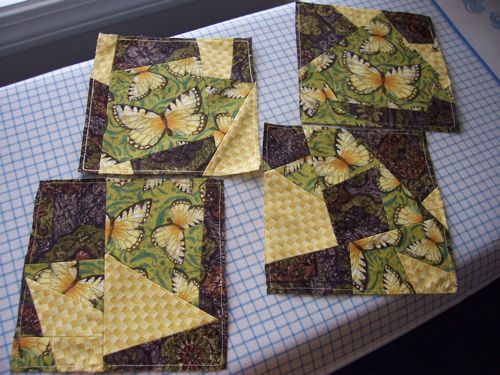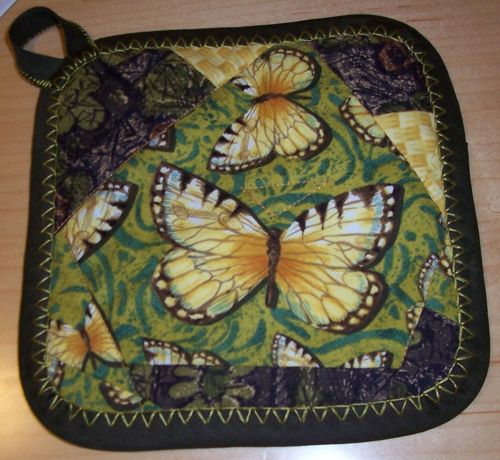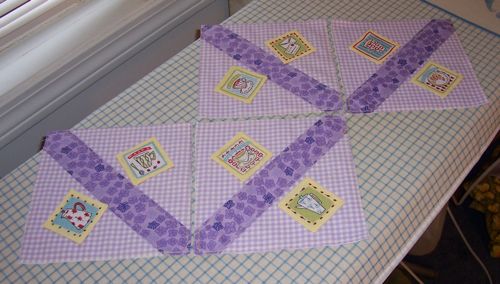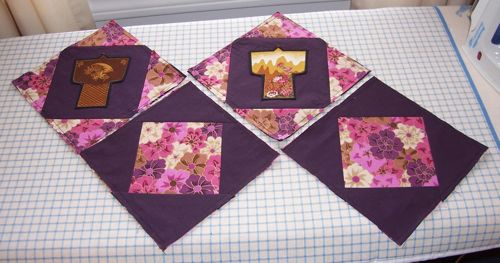I love crazy quilts. Although patchwork quilts can be quite beautiful, I seem to lack the “precision” gene needed for equal angles and clean lines, and I suspect I would find it aggravating. However, crazy quilts are on the table.
Many of the lovely historical quilts have themes, such as fans or flowers. I once entertained the notion of a quilt about my history: schools, hobbies, places I’ve lived. That idea never got off the ground, however, and the project that did is the Children’s Book Quilt.
I have a couple of shelves’ worth of children’s books despite having no children, and a few favorite illustrators – Shel Silverstein, Maurice Sendak, Tove Jansson. The children’s book quilt will have embroidered versions of illustrations from specific books, as well as applique images and motifs, and possibly even some painted images (for Leo Lionni’s books, in particular). I will give a complete rundown of the ideas I have next time I finish an embroidery piece, but for now I want to share the two I’ve done so far and talk about the process.
I use tracing paper to copy the images out of the book with a pencil, darken the main lines, and then trace them again onto wash-away embroidery stabilizing paper. Then I cut them out and pin them to fabric, stitching on the lines. I use my beloved DMC color card (I am so glad I got one before they switched from actual floss samples to photos – the sheen is different; I can’t imagine it’s as accurate) to pick floss colors if appropriate. All the embroidery is just freehand straight stitch or backstitch; when I finally put the individual pieces together I’ll use fancier stitches for edges.
The more recent is Shel Silverstein’s bearded man, from Where the Sidewalk Ends:
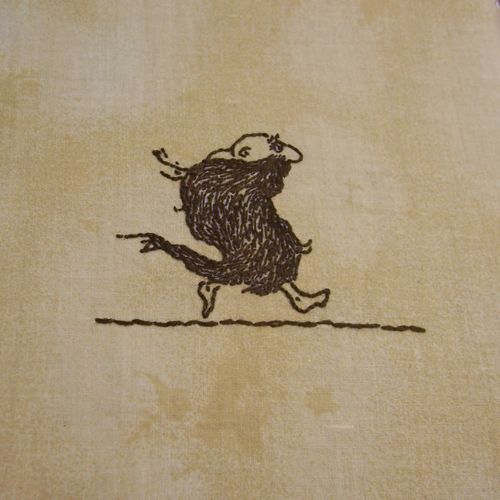
I realized after the fact that I fig-leafed him a bit, covering his bare behind with beard, but I am still thrilled at how well he came out – especially his feet. In the tightly-stitched areas, however, the wash-away paper is not living up to his name. It withstood rinsing in water, soaking in white vinegar, rinsing in water again, and two trips through the washing machine pinned flat in a mesh bag. Ideas are welcome.
Less recent is the Dodecahedron from Norton Juster’s The Phantom Tollbooth, illustrated by Jules Feiffer.
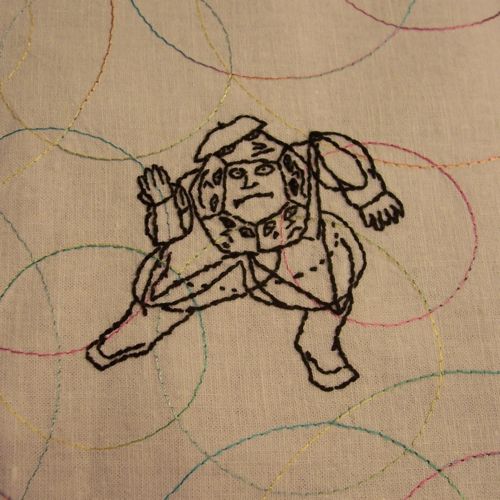
His stitching is not as good as the bearded man (possibly I used too many strands; I can’t remember), but it will do. He had the same problem with the wash-away paper, especially in his eyes. However, the fabric, though it’s hard to tell, is white with pastel circles stitched into it, so I just re-stitched the pupils that were hidden by paper. I only noticed as I was re-stitching the eyes that his right arm is perfectly aligned with the underlying circle.
I’ve been trying to stick to books I actually had as a child. I have We Were Tired of Living In a House (the beautiful illustrations by Doris Burn, not the lame and generic new ones) in progress and something from Finn Family Moomintroll (Tove Jansson) set up but unstitched. I am dissatisfied with the fabric for the latter, though, and would probably prefer a different image, so I may break my rule and use an image from a more recently-acquired Moomin book. My first multicolor embroidery will probably be Bananas Gorilla from the Richard Scarry books, because he’s the raddest. I am a slow embroiderer, but hope to complete this quilt before I am of retirement age!
Note: the copyrights to the illustrations in Where the Sidewalk Ends and The Phantom Tollbooth are held by Evil Eye Music, Inc., and Jules Feiffer, respectively.
